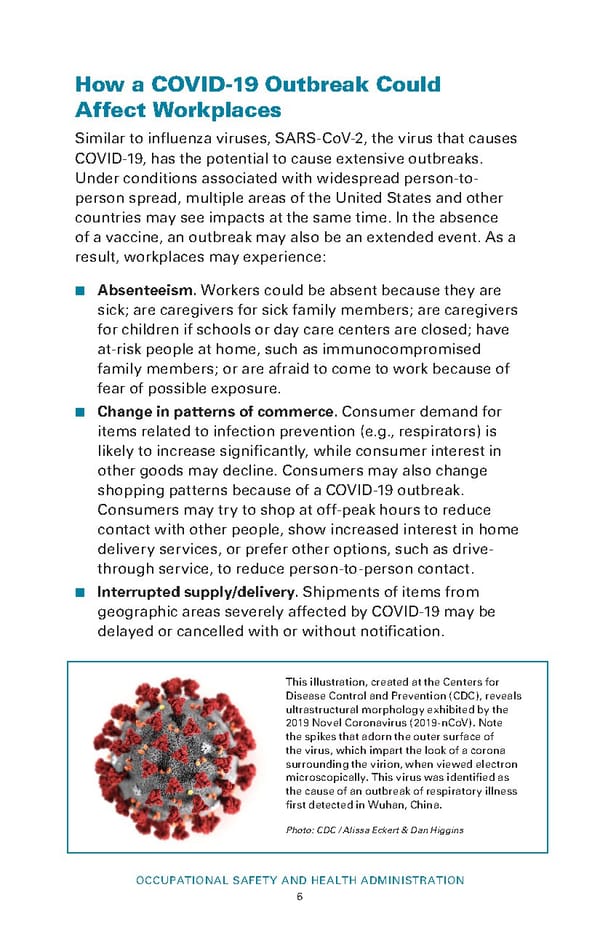How a COVID-19 Outbreak Could Affect Workplaces Similar to influenza viruses, SARS-CoV-2, the virus that causes COVID-19, has the potential to cause extensive outbreaks. Under conditions associated with widespread person-to- person spread, multiple areas of the United States and other countries may see impacts at the same time. In the absence of a vaccine, an outbreak may also be an extended event. As a result, workplaces may experience: ■ Absenteeism . Workers could be absent because they are sick; are caregivers for sick family members; are caregivers for children if schools or day care centers are closed; have at-risk people at home, such as immunocompromised family members; or are afraid to come to work because of fear of possible exposure. ■ Change in patterns of commerce . Consumer demand for items related to infection prevention (e.g., respirators) is likely to increase significantly, while consumer interest in other goods may decline. Consumers may also change shopping patterns because of a COVID-19 outbreak. Consumers may try to shop at off-peak hours to reduce contact with other people, show increased interest in home delivery services, or prefer other options, such as drive- through service, to reduce person-to-person contact. ■ Interrupted supply/delivery . Shipments of items from geographic areas severely affected by COVID-19 may be delayed or cancelled with or without notification. This illustration, created at the Centers for Disease Control and Prevention (CDC), reveals ultrastructural morphology exhibited by the 2019 Novel Coronavirus (2019-nCoV). Note the spikes that adorn the outer surface of the virus, which impart the look of a corona surrounding the virion, when viewed electron microscopically. This virus was identified as the cause of an outbreak of respiratory illness first detected in Wuhan, China. Photo: CDC / Alissa Eckert & Dan Higgins OCCUPATIONAL SAFETY AND HEALTH ADMINISTRATION 6
 Guidance on Preparing Workplaces for COVID-19
Page 7 Page 9
Guidance on Preparing Workplaces for COVID-19
Page 7 Page 9